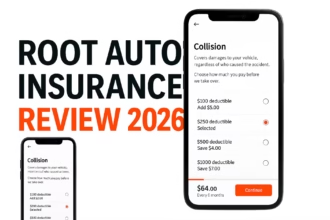
In today’s dynamic financial landscape, choosing the right savings account is crucial for achieving your financial goals. With interest rates fluctuating and various account options available, understanding how to select the best savings account for your needs has never been more important. This comprehensive guide will walk you through everything you need to know about choosing a savings account in the USA.
Understanding Different Types of Savings Accounts
Before diving into the selection process, it’s essential to understand the various types of savings accounts available to American consumers.
Traditional Savings Accounts
Traditional savings accounts are the most basic option, typically offered by brick-and-mortar banks and credit unions. While these accounts offer easy access to your money and straightforward features, they usually provide lower interest rates. According to the FDIC, the average traditional savings account interest rate is just 0.37% as of recent data.
High-Yield Savings Accounts
High-yield savings accounts have become increasingly popular, especially among online banks. These accounts typically offer significantly higher Annual Percentage Yields (APYs) compared to traditional accounts. As of 2024, many online banks are offering APYs exceeding 4%, making them an attractive option for maximizing your savings.
Money Market Accounts
Money market accounts combine features of both checking and savings accounts. They often offer competitive interest rates and come with check-writing privileges or debit cards. However, they may have higher minimum balance requirements and transaction limitations.
Jumbo Savings Accounts
Designed for high-net-worth individuals, jumbo savings accounts typically require minimum deposits of $100,000 or more. These accounts may offer premium interest rates and additional perks, but they’re not suitable for most everyday savers.
Key Factors to Consider When Choosing a Savings Account

1. Annual Percentage Yield (APY)
The APY is arguably the most important factor when choosing a savings account. As of 2024, competitive rates include:
- Online banks: 4.00% – 5.30% APY
- Traditional banks: 0.01% – 1.00% APY
- Credit unions: 1.00% – 3.00% APY
2. Minimum Balance Requirements
Different accounts have varying minimum balance requirements:
- Basic savings accounts: Often $0-$100
- High-yield savings accounts: Usually $0-$500
- Money market accounts: Typically $500-$2,500
- Jumbo accounts: $100,000+
3. Fees and Charges
Watch out for these common fees:
- Monthly maintenance fees
- Excessive withdrawal fees
- ATM fees
- Wire transfer fees
- Paper statement fees
4. Access and Convenience
Consider how you’ll need to access your money:
- Online and mobile banking capabilities
- ATM network availability
- Branch locations (if important to you)
- Transfer options and limitations
- Customer service availability
Online vs. Traditional Banks
Advantages of Online Banks
- Higher APYs (often 10-11x the national average)
- Lower fees
- Advanced digital banking features
- 24/7 online access
Benefits of Traditional Banks
- Face-to-face customer service
- Immediate access to funds
- Full-service banking relationships
- Cash deposit capabilities
Special Considerations for Different Savings Goals
Emergency Fund
- Look for accounts with:
- No minimum balance requirements
- Easy access to funds
- No monthly fees
- Competitive interest rates
Short-Term Savings
- Consider:
- High-yield savings accounts
- Money market accounts
- No lock-up periods
Long-Term Savings
- Options include:
- High-yield savings accounts
- CDs for portions of savings
- Multiple accounts for different goals
Steps to Choose the Right Savings Account
- Determine your savings goals
- Calculate how much you can maintain in the account
- Research current competitive rates
- Compare fees and requirements
- Evaluate access needs
- Consider additional features and benefits
- Read customer reviews and ratings
- Check FDIC/NCUA insurance coverage
Security and Insurance Considerations
All reputable savings accounts should be insured by either:
- FDIC (Federal Deposit Insurance Corporation) for banks
- NCUA (National Credit Union Administration) for credit unions
Coverage limits are typically $250,000 per depositor, per institution.
Current Market Trends
As of 2024, several trends are shaping the savings account market:
- Rising interest rates in response to Federal Reserve policies
- Increased competition from online banks
- Enhanced digital banking features
- Focus on user experience and mobile accessibility
- Growing emphasis on no-fee accounts
Conclusion
Choosing the right savings account requires careful consideration of your financial goals, preferred banking style, and needed features. While high APYs are important, don’t forget to consider factors like fees, access, and security. Take time to compare multiple options and read the fine print before making your decision.
Remember that your banking needs may change over time, so regularly review your accounts to ensure they continue meeting your financial objectives. The best savings account is one that aligns with your specific needs while helping you maximize your savings potential.
Frequently Asked Questions
Q: What is the minimum amount needed to open a savings account?
A: This varies by institution and account type. Many online banks and some traditional banks offer accounts with no minimum opening deposit, while others may require $25-$100 or more.
Q: How many savings accounts should I have?
A: There’s no universal answer, but many financial experts recommend having 2-3 accounts for different purposes (emergency fund, short-term savings, specific goals).
Q: Are online banks safe?
A: Yes, as long as they’re FDIC-insured. Online banks often have stronger security measures than traditional banks due to their digital-first nature.
Q: How often can I withdraw from my savings account?
A: While previous federal regulations limited savings withdrawals to six per month, many banks now set their own limits. Check with your specific institution for their policies.
Q: Should I choose a bank that also offers checking accounts?
A: This depends on your needs. Having both accounts at the same bank can make transfers easier, but you might earn better rates by keeping savings at a different institution.
In another related article, Using a 0% Intro APR Credit Card as an Emergency Fund: Pros, Cons, and Best Practices





